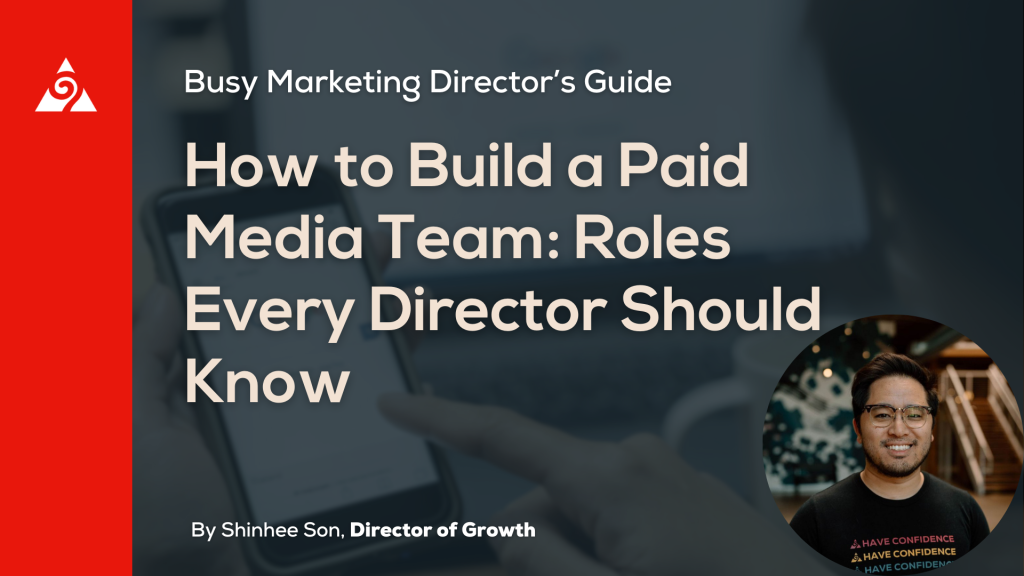Creating a successful paid media team means understanding paid social, display, and paid search advertising. With rising costs, AI changes to search results, and the dynamic and constantly evolving nature of digital advertising, it can be hard to keep up. Ad platform features always seem to be changing, especially with the rise of AI. It’s no surprise to hear how many marketing directors are unsure of what to trust. This guide explains the key roles you need to build a team that gets consistent results across all paid media channels.
What It Takes to Run a Successful Paid Media Strategy
Paid campaigns aren’t just about placing ads; they require strategic planning and budget allocation to maximize return on investment. It’s about knowing your audience, crafting strong messages, and optimizing performance. Here are the key roles you need:
1. Paid Media Manager
- What They Do: Oversee the entire paid media strategy, including careful planning and management of ad spend to maximize the effectiveness of the advertising budget across various digital platforms like social media.
- Responsibilities: Coordinate with other marketing teams and analyze performance.
- Likelihood of Separate Hire: High. This role needs dedicated expertise.
- Alternative: A Marketing Manager with paid media training.
2. Paid Social Specialist
- What They Do: Manage paid social media campaigns on various social media channels like Facebook, Instagram, LinkedIn, and Twitter.
- Responsibilities: Develop and optimize ads, target audiences, and track performance.
- Likelihood of Separate Hire: High. This role requires specialized knowledge.
- Alternative: A Social Media Manager with paid social training.
3. Display Advertising Specialist
- What They Do: Manage display ad campaigns on networks like Google Display Network.
- Responsibilities: Design and optimize ads, including text, image, and video ads, target audiences, and track performance.
- Likelihood of Separate Hire: Moderate to High. This role needs special skills.
- Alternative: A Graphic Designer with display ad training.
4. Paid Search Specialist (PPC Specialist)
- What They Do: Manage pay-per-click (PPC) campaigns on platforms like Google Ads and Bing Ads, ensuring that PPC ads appear on search engine results pages.
- Responsibilities: Conduct keyword research, create ad copies, and optimize bids.
- Likelihood of Separate Hire: High.
- Alternative: An SEO Specialist with PPC training.
5. Data Analyst
- What They Do: Analyze data from all paid media campaigns and provide insights.
- Responsibilities: Develop reports to track performance and ROI.
- Likelihood of Separate Hire: Moderate to High.
- Alternative: A Business Analyst trained in paid media data analysis.
6. Creative Director
- What They Do: Oversee the creative direction for ad campaigns.
- Responsibilities: Ensure ads align with the brand and appeal to the target audience.
- Likelihood of Separate Hire: Moderate.
- Alternative: An Art Director with paid media training.
7. Copywriter
- What They Do: Write compelling ad copies that drive engagement and conversions, especially for sponsored social media posts.
- Responsibilities: Develop ad copy for social, display, and search ads.
- Likelihood of Separate Hire: Moderate.
- Alternative: A Content Writer trained in paid media.
8. Conversion Rate Optimization (CRO) Specialist
- What They Do: Optimize landing pages for conversions and user experience.
- Responsibilities: Conduct A/B testing, analyze user behavior, and implement changes to improve conversion rates.
- Likelihood of Separate Hire: High. This role needs specialized skills.
Alternative: A UX/UI Designer with CRO training.
Benefits of a Strong Paid Media Team
Targeted Advertising: Your team will create highly targeted campaigns that reach the right audience with the right message, making your ads more effective.
Optimized Performance: With specialized roles, your team will continuously improve, leading to better performance and higher ROI.
Enhanced Overall Marketing: The skills and insights from managing paid media will also benefit other marketing areas, like content creation and data analysis, improving your overall strategy. Additionally, integrating owned media, such as blog posts and social media content, is vital for generating organic traffic and engaging customers.
Speed of Learning: A strong paid media team can quickly test and learn what works for different audiences. This helps other teams, like SEO and social media, by providing useful insights.
Next Steps
During the next few weeks, review your team’s current capabilities. Find areas that need more training or where new hires are necessary to fill essential roles. Make sure your team is ready to meet the complexities of paid media advertising, including selecting the right paid media channel for your campaigns. By building a strong, versatile team, you’ll see better results in paid media and a stronger overall marketing strategy, fostering true company growth.
- Budgeting Content Marketing in 2024: How to Align Your Content Budget With Business Goals - September 9, 2024
- Budgeting Paid Media in 2024: How to Align Your Paid Media Budget With Business Goals - September 9, 2024
- Budgeting SEO in 2024: How to Align Your SEO Budget With Business Goals - September 9, 2024





